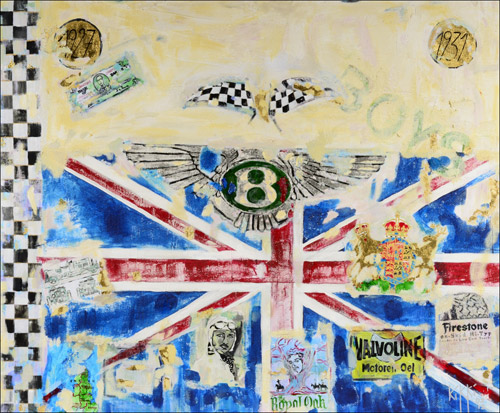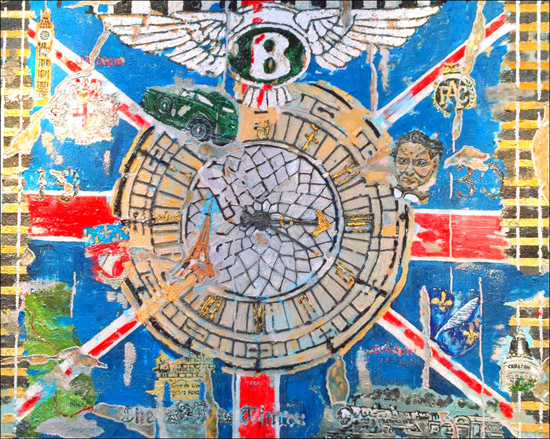Vintage style in a class of its own
Contributed by Kikki H.This image shows the beautiful Bentley Wing logo, still the benchmark of the British luxury brand around the world. Bentley had its headquarters in the Midlands, where W.O. Bentley laid the foundation for a glorious era by building the 4½ L. Woolf Barnato, one of the Bentley Boys, bought the company that created the famous Bentley Blower racing cars

The time of the 4½-liter Bentleys was from 1927 to 1931, when the cars, the so-called "fastest trucks in the world", supported by the Bentley Boys, became popular and u.a. under Sir Henry "Tim" Birkin, won the 24 Hours of Le Mans 24 Hours in 1929. The drawing on the left shows the Birkin-Blower # 9 as well as the English crest in the Union Jack and advertisements at this time, e.g. Firestone tires. After the car tests and after the race, the riders met in pubs like the Royal Oak, where they celebrated their cars, themselves and their lives - as the Bentley Boys do today.
~~

Woolf Barnato - heir to a large fortune from the Kimberley diamond mines in South Africa - was the ultimate 'Bentley Boy'. A brilliant sportsman, connoisseur and generous host, he became chairman of Bentley Motors in 1926, when the company was fighting for capital. WHERE Bentley considered him the best of the team's drivers. At a dinner aboard a yacht near Cannes in March 1930, when the theme of the race against the famous Blue Train came up, Barnato bet £ 200 that he could beat the train to Calais with ease at the wheel of his Speed Six. The next day At 5:45, when the Blue Train train station left Cannes, Barnato and his companion, amateur golfer Dale Bourne, started at Speed Six. During the 185 miles from Cannes to Lyon, the two men had heavy rain to contend with. At about 4:00, between Lyon and Paris, near Auxerre, the team lost time looking for their pre-determined fuel stops. Despite this setback and heavy fog near Paris and a flat tire claiming their only replacement tire, Barnato and Bourne finally reached Calais at 10:30 in the morning. They had driven more than 570 miles at an average speed of 43.43 mph, an impressive feat on the dusty and rough roads of those days. Barnato in Calais, with so much ahead of the move, decided to continue to London. After crossing the canal in a packet steamer, the customs maneuvering him through and for a total of nearly 700 miles, Woolf Barnato parked his Speed Six outside the Conservative Club on St. James's Street at 03:20. Only four minutes later, the Blue Train arrived at the station in Calais.
The picture shows the rapid ride against time, embodied by the dial of the Big Ben, which we find in the upper left corner of the picture. The tower of the Carlton Hotel and the coat of arms of Cannes is the start, it went on over Paris - the Eiffel Tower as a symbol of the city with the old coat of arms, through to London, near the Big Ben to the RAC, the Royal Automobile Club. There is a train ticket of Train Bleu, a portait Woolf Barnatos as well as the map with the driving lane. Beautifully right and left the "tracks" that are finished with sterling silver, as well as the impressive Bentley wing logo.
Kikki H.
www.kikki-h.com ~ kikki.h@outlook.de ~ Te: 0049 173 51 44 002
